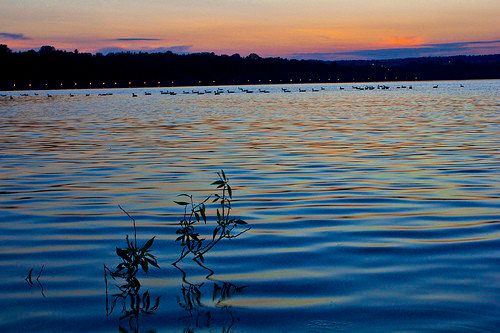
The Chesapeake Bay is the largest estuary in the United States, H. L. Mencken's "immense protein factory," Ronald Reagan's "special national resource," home to 17 million people, and worth an estimated $1 trillion.
Nature gave our Chesapeake Bay a body blow at the end of the summer. The torrential rains from Hurricane Irene and Tropical Storm Lee washed literally tons of pollution laden sediment into creeks, rivers, and the Bay. The pictures spoke a thousand words.
But the real pollution impact to the Bay comes each and every day, 365 days a year, year after year. Too much pollution is routinely discharged from sewage treatment plants and industry, or runs off fields and streets with every rainfall, large or small. The good news is the fact that science gives strategies to address each and every source of pollution.
The bad news is the fact that the Chesapeake's real death knell just might turn out to be the battle that some in Congress are waging to derail what has recently emerged as historic federal-state cooperation to finally save it. These obstructionists are just saying no at a time when the public demands clean water and when, despite the whims of Mother Nature, there have been real signs of hope -- underwater grasses thriving in some parts of the Bay, oysters showing signs of increased disease resistance, and crabs rebounding after careful management programs were implemented.
Ten months ago, the EPA followed the law and set a pollution "diet" for the Bay, known legally as a Total Maximum Daily Load or TMDL. The Bay watershed states wrote plans to reduce pollution and achieve the goals of the TMDL and are now working to refine their plans and implement them. The Bay restoration train has left the station and is gaining momentum as it rolls down the track.
But some in Congress are working hard to put on the brakes to bring it to a full stop. They don't represent the American public. Rather, they represent the multi-billion dollar agri-chemical industry, which funds their reelection campaigns. Big Ag is afraid their profits may be trimmed nationwide if pollution is successfully reduced in the Bay by regulating their industries -- fertilizer, hog, and chicken.
They used "funny science" to make their case. A group called the Agricultural Nutrient Policy Council (ANPC), many of the same agribusiness lobbyists trying to derail the TMDL, commissioned a report issued last December. The report criticized the computer model the EPA used to develop the Bay pollution diet and called for the suspension of the TMDL.
The Council is chaired by a staff member at the American Farm Bureau Federation and includes members from the Fertilizer Institute, the National Pork Producers Council, the National Corn Growers Association, and the Agribusiness Retailers.
Independent scientific reviews of that report by a University of North Carolina scientist and a panel of scientists convened by the Chesapeake Bay Program's Scientific and Technical Advisory Committee found it to be seriously flawed and to lack justification for delaying the TMDL. But that seems to be business as usual for those who care more about their own profits than the public good.
What an obscene irony. All citizens are forced to put up with dirty water so the big industries can cut corners and make more money.
Pollution is illegal, and we know how to stop it. We just need to stand up to those who are trying to subvert the Clean Water Act. Allow government to enforce the law! Stop the corporate lobbyists from ruining our Bay! Take back your right to clean water, abundant fish and shell fish, and water that is safe for kids to swim in. Please, let your elected officials know how you feel. To find out how, go to www.CBF.org/getinvolved.